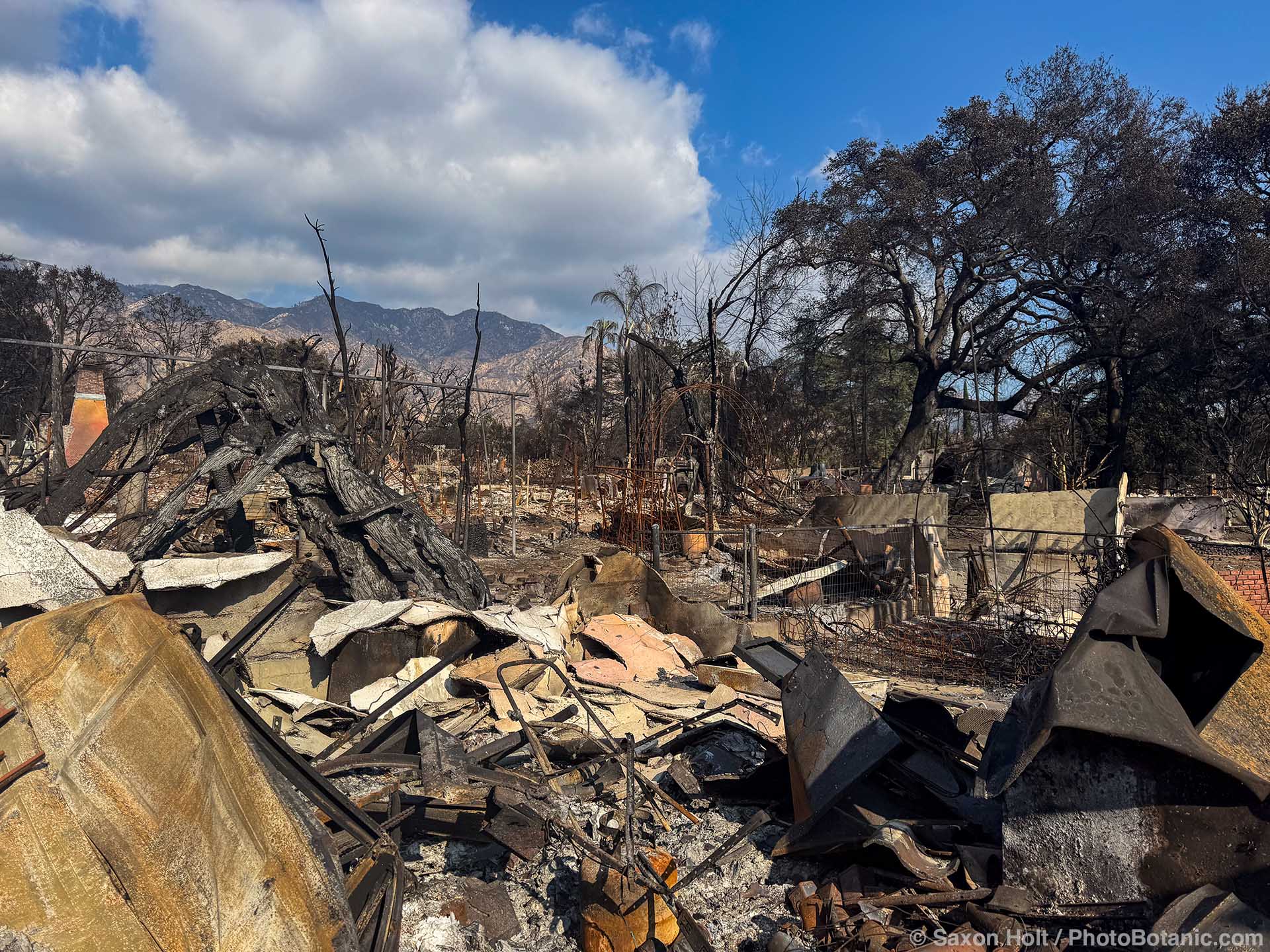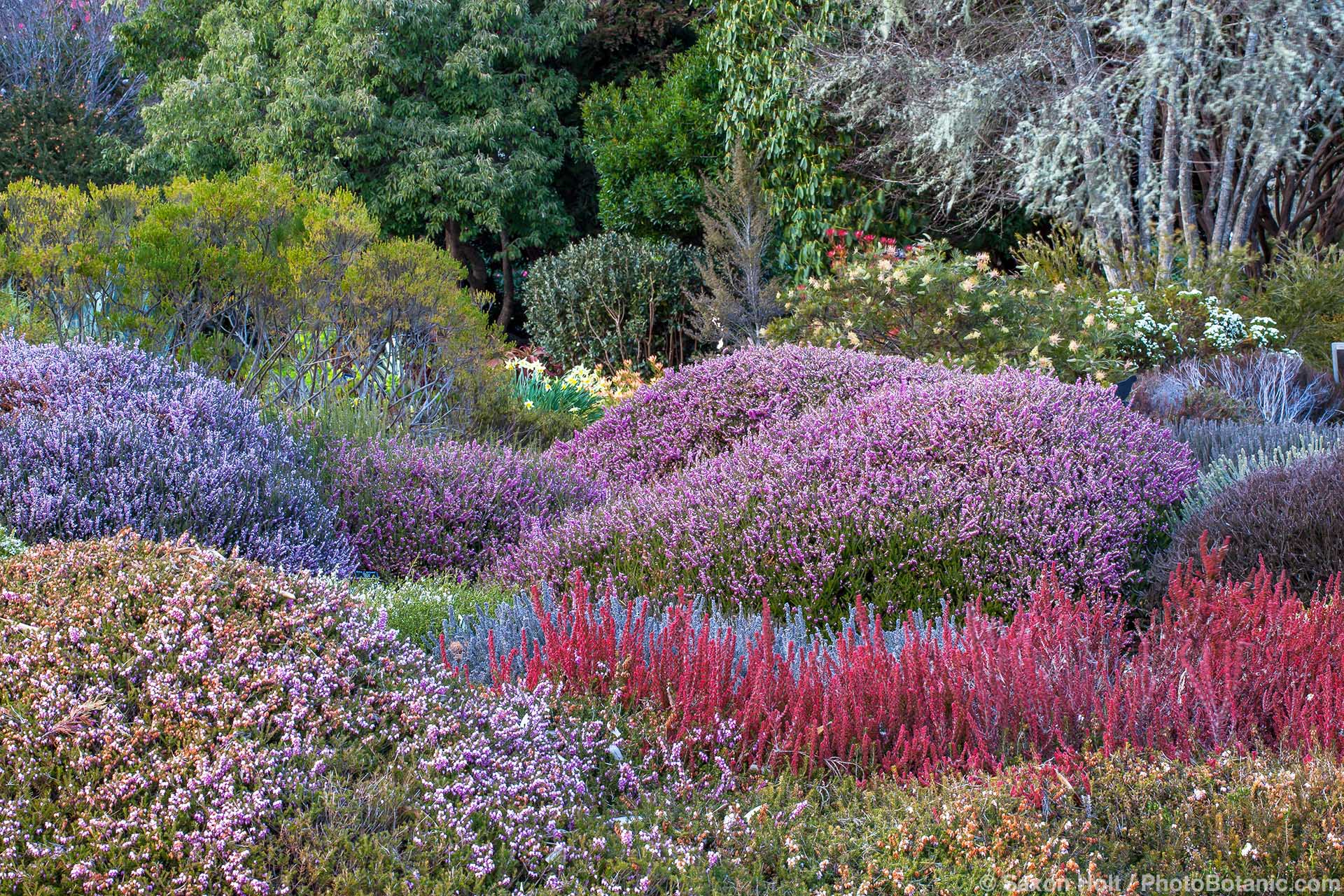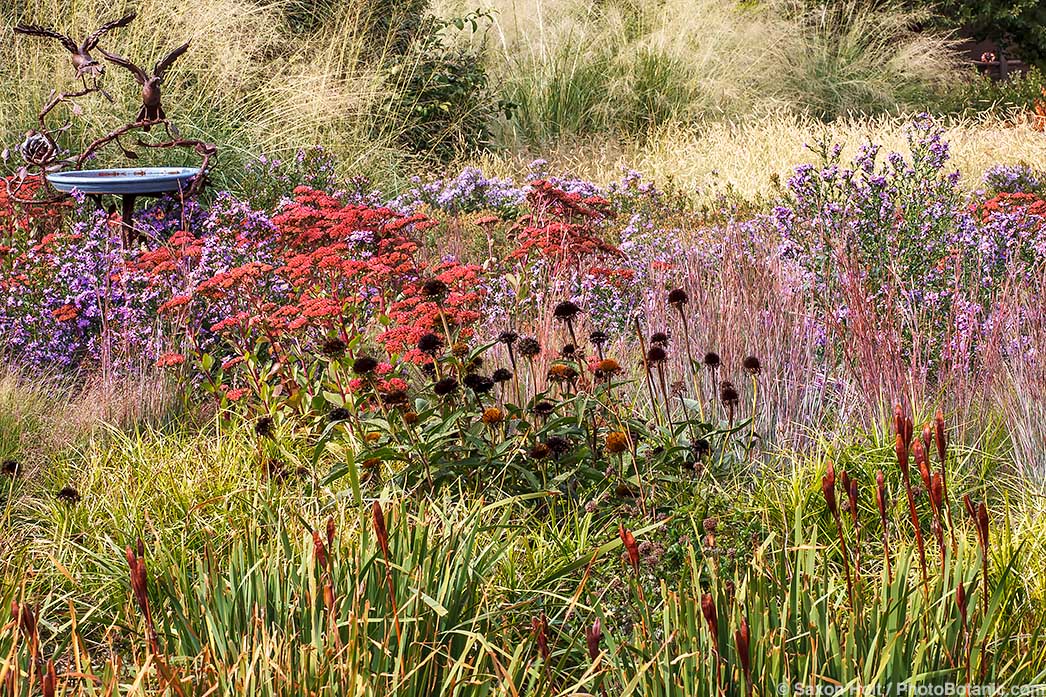The Summer-Dry Garden
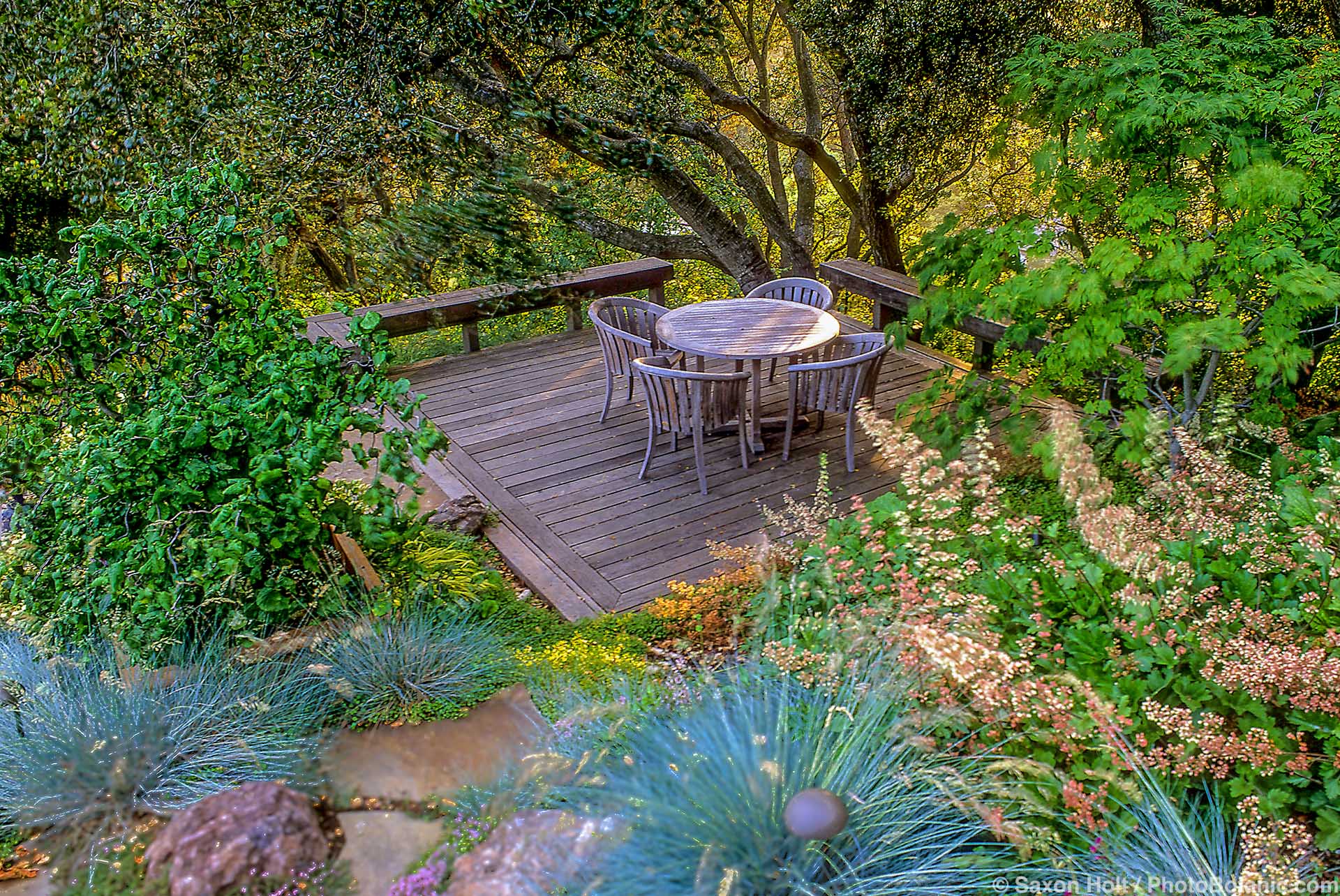
Share This!
 There is no good reason summer-dry gardens can’t be beautiful. There are thousands of plants from the various summer-dry climates of the world that naturally thrive in dry summers. The art and science of gardening is learning which plant prosper in individual garden settings. Many of the best ornamental plants from summer-dry climates don’t require any summer water once established, though careful irrigation improves their resiliency within the human landscapes.
There is no good reason summer-dry gardens can’t be beautiful. There are thousands of plants from the various summer-dry climates of the world that naturally thrive in dry summers. The art and science of gardening is learning which plant prosper in individual garden settings. Many of the best ornamental plants from summer-dry climates don’t require any summer water once established, though careful irrigation improves their resiliency within the human landscapes.
We most certainly recommend California native plants, which is the largest category in our database, but plants native to other summer-dry climates mix very well and add special interest to many of those novel human ecosystems we call gardens.
Since we do know the summers will be dry, let’s hope for wet winters to recharge the groundwater and to dump snow in the mountains, storing water that will fill lakes and reservoirs, keep the rivers flowing, and provide irrigation districts with that precious H2O . Unfortunately, as I write this, we in California are in a particularly dry pattern, now in the third year of well below average winter rain. Water is being rationed.
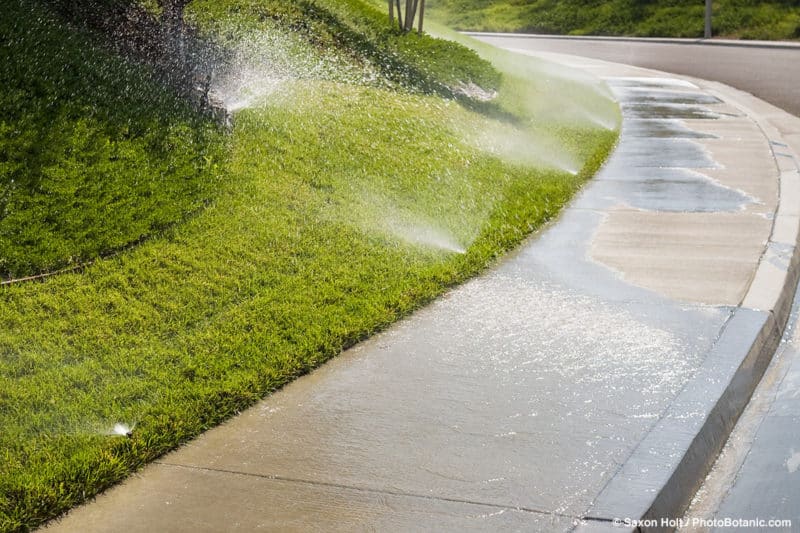
So water use and its allocation is hot political issue, but not just in California, throughout the world; it is a resource that is increasingly scarce everywhere as the world population grows. We must use water wisely and efficiently to keep our cities green. For gardeners, that means the right plant in the right place.
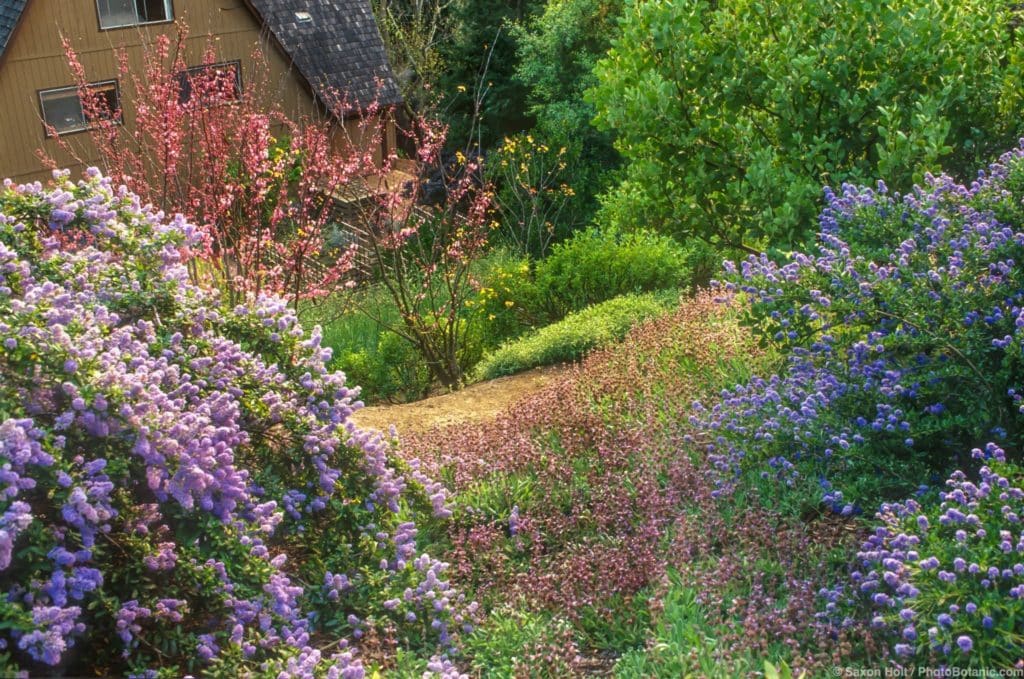
Gardeners need to embrace the summer-dry climate and use plants that are adapted to it. This does not simply mean drought tolerant plants, it means climate tolerant, adapted and sustainable. All plants are drought tolerant in their native habitats.
In summer-dry climates we don’t seek plants that are simply tolerant of no summer water, we need plants that expect no summer water. Here, dry summers are not drought, they are normal.
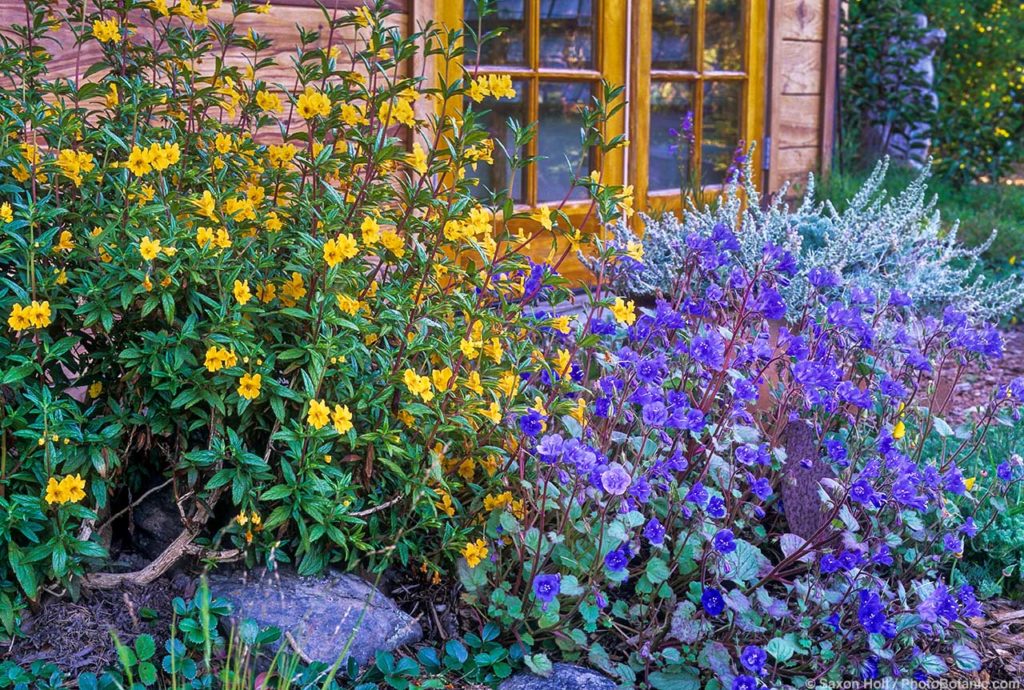
For gardeners who want a broad plant palette the best garden plants are those that will accept some summer water to be a bit more fulsome, blending into the natural aesthetic of summer-dry climates. We do expect gardeners will use some supplemental irrigation for some plants
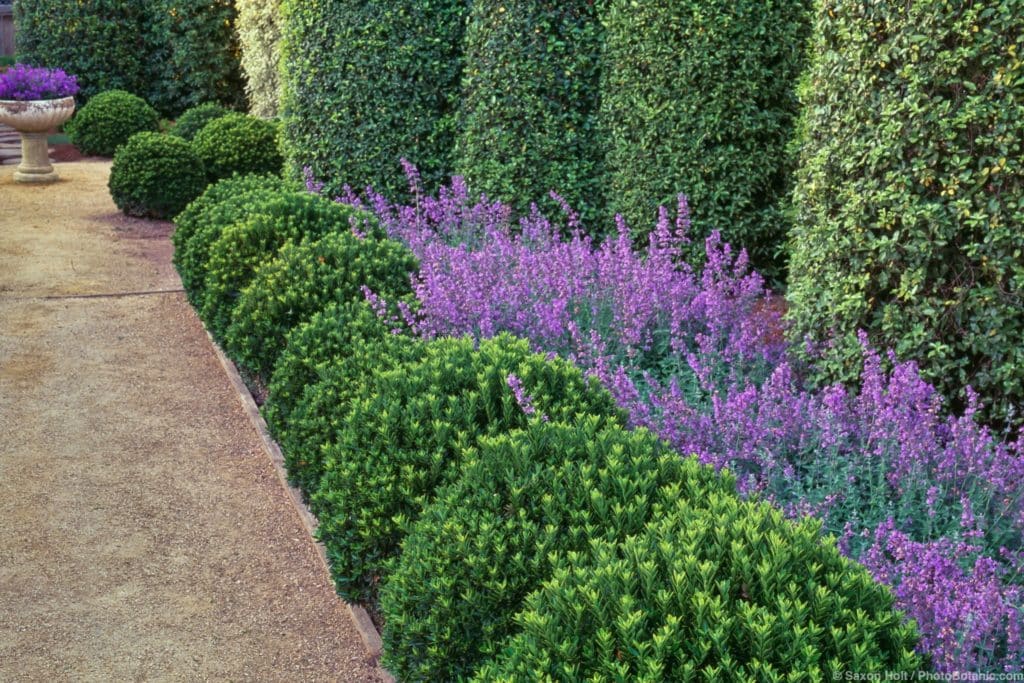
As a garden photographer I have spent many years learning to appreciate our summer-dry climate and looking for gardens to illustrate the best garden practices. I really want to help other gardeners have success and so, with landscape architect and award winning garden writer Nora Harlow have launched this website to promote the summer-dry garden, and the best plants for it.
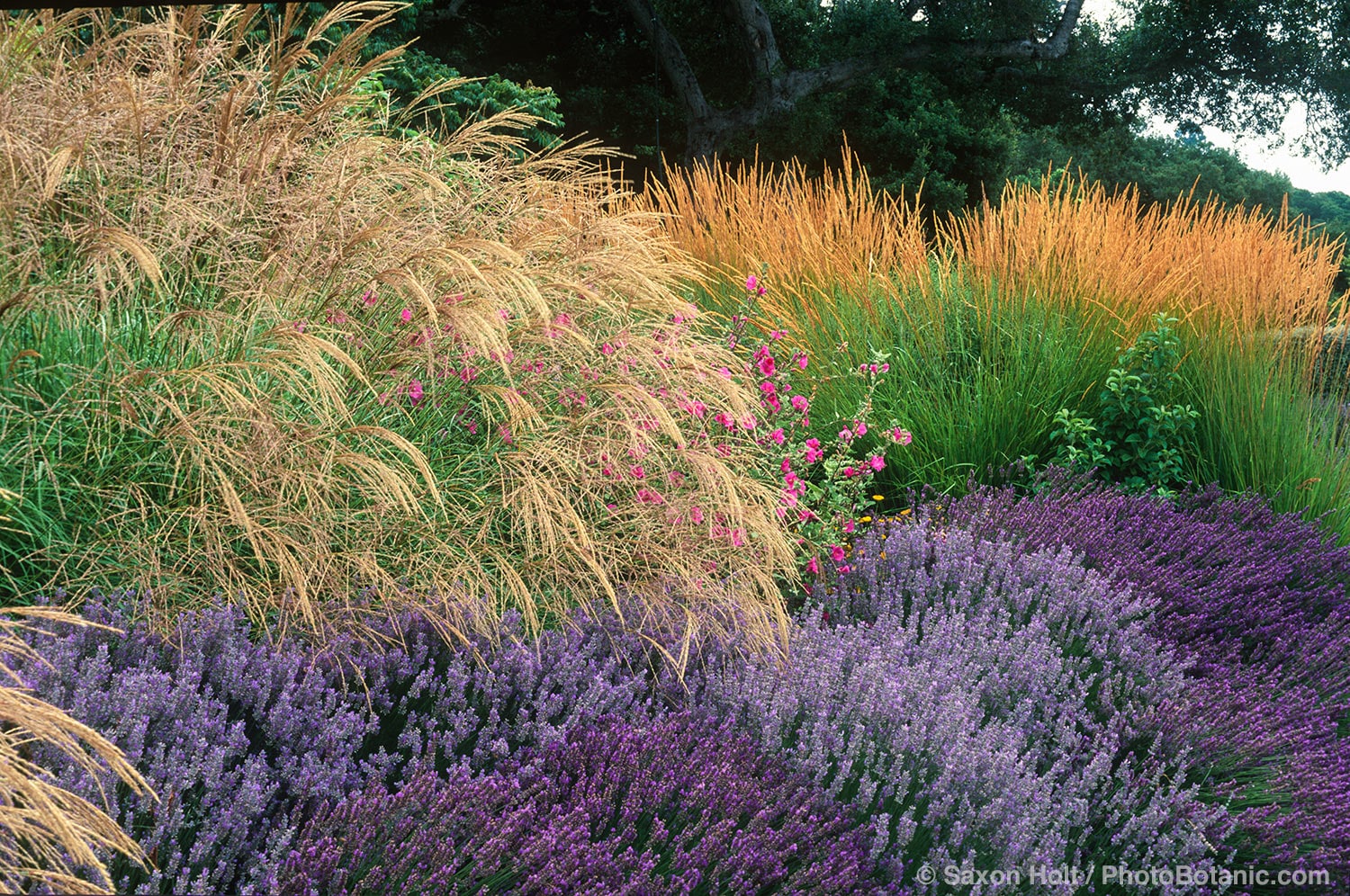
All photos on the site database are taken from the original Plants and Landscapes for Summer-Dry Climates, the book I photographed when Nora worked for the East Bay Municipal Utility District. We revised and updated that in the Timber Press book Gardening in Summer-Dry Climates. Autographed copies here.
Many have called our climate a mediterranean climate and for many years we accepted that description almost as an honor. Many of the best performing plants we could find in nurseries came from the Mediterranean region such as aromatic herbs – lavender, rosemary, thyme; or tough perennials such as Erysimum, Euphorbia, Helianthemum; or trees and shrubs like Cistus, Oleander, olive, Italian cypress. All useful plants but yawn, there is much more.
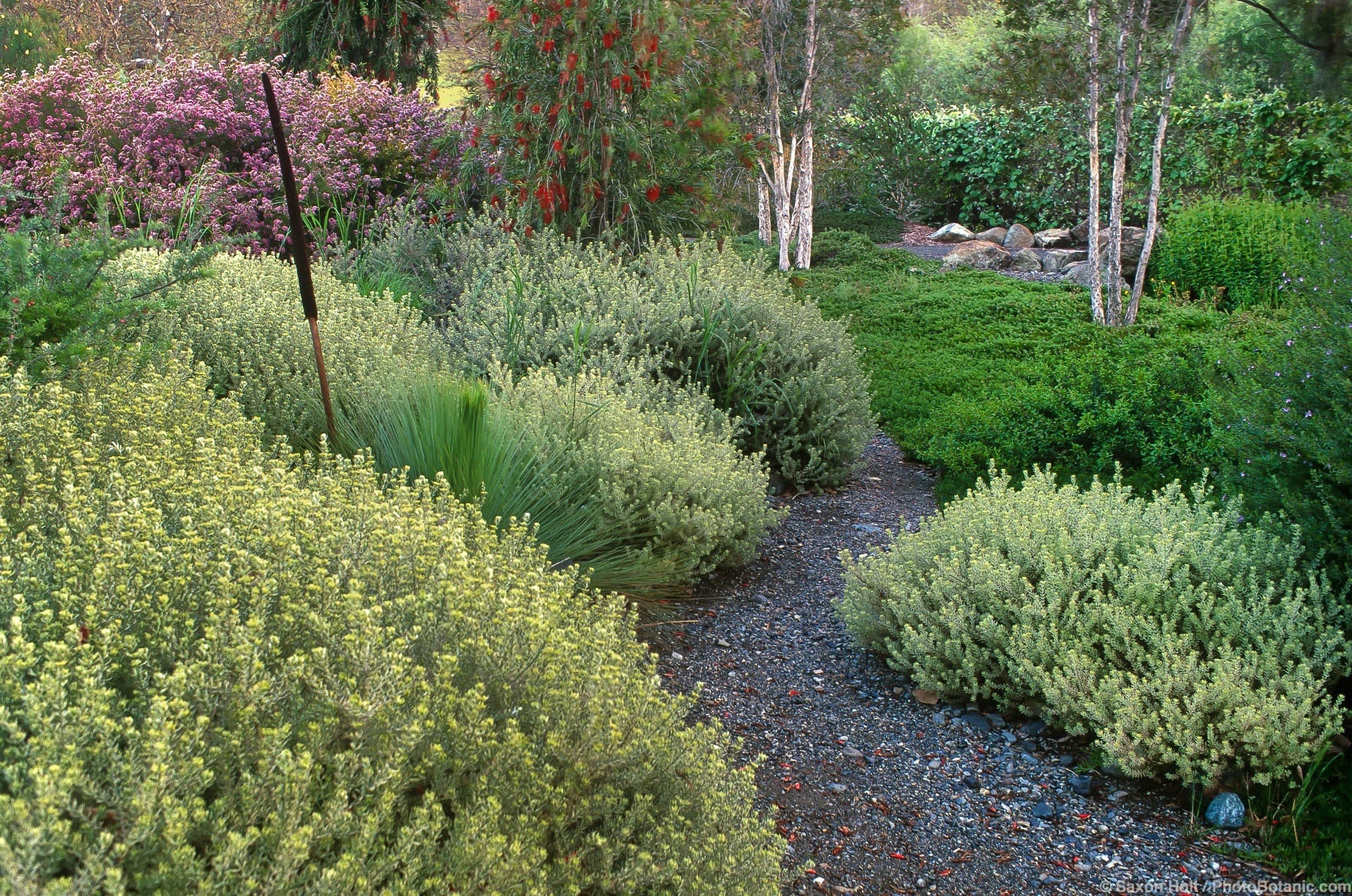
Westringia ‘Smokey’ featured in a California garden with Australian native plants.
Not only have California gardeners really embraced our own natives as garden plants, there are three other major summer-dry regions of the world outside the Mediterranean: South Africa, central Chile, and Southwest Australia all have flora readily adapted to other summer-dry climates. Let’s not call all five summer-dry regions of this big world “mediterranean” simply because it was the first to develop a strong aesthetic.
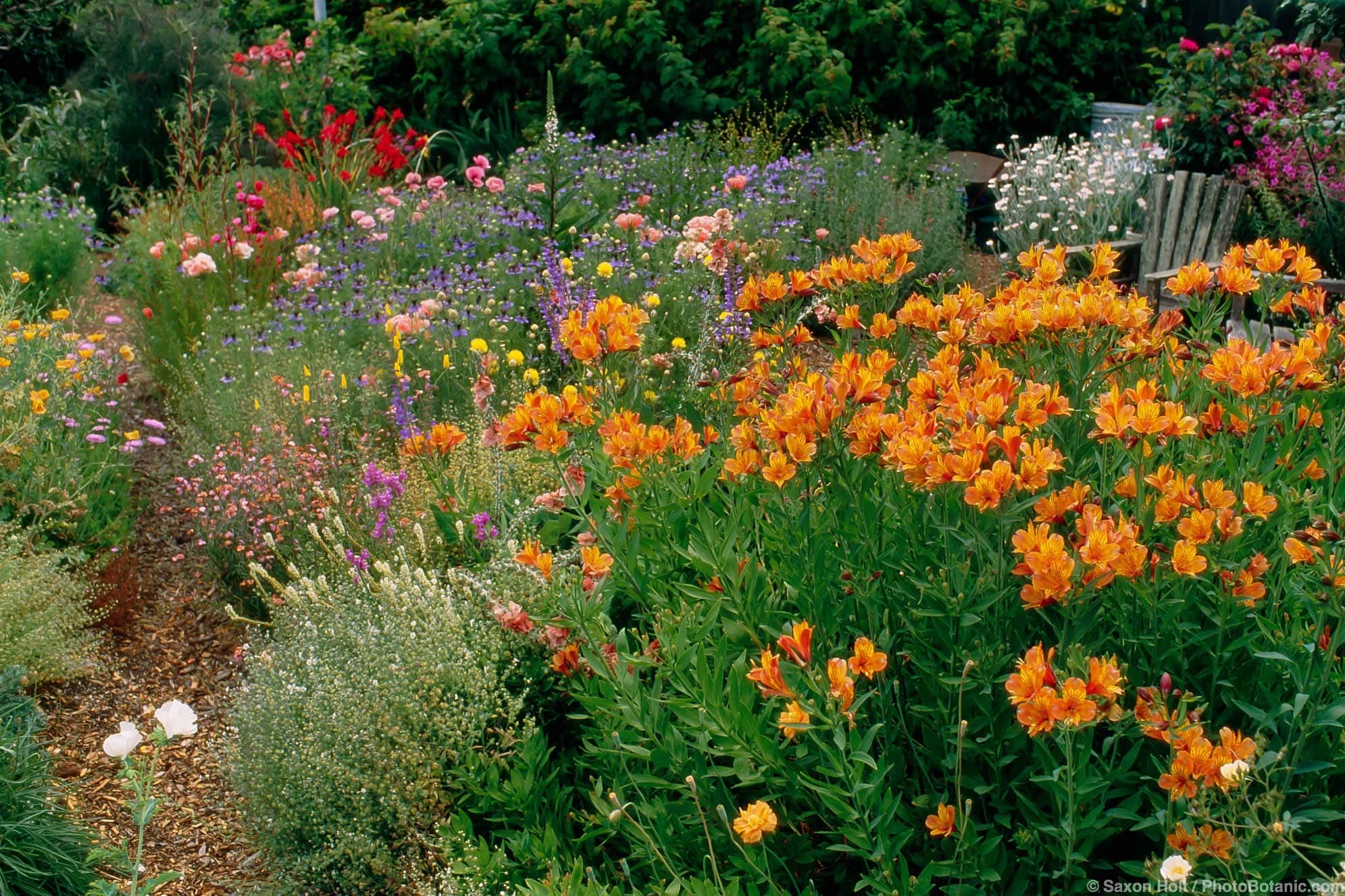
Chilean perennial, Alstromeria, in California wildflower garden
As gardeners, plant explorers, and nurseries become more sophisticated and knowledge about a broad range of plants from diverse regions, new aesthetics will emerge. We think summer-dry is a better, more broadly encompassing term than mediterranean.
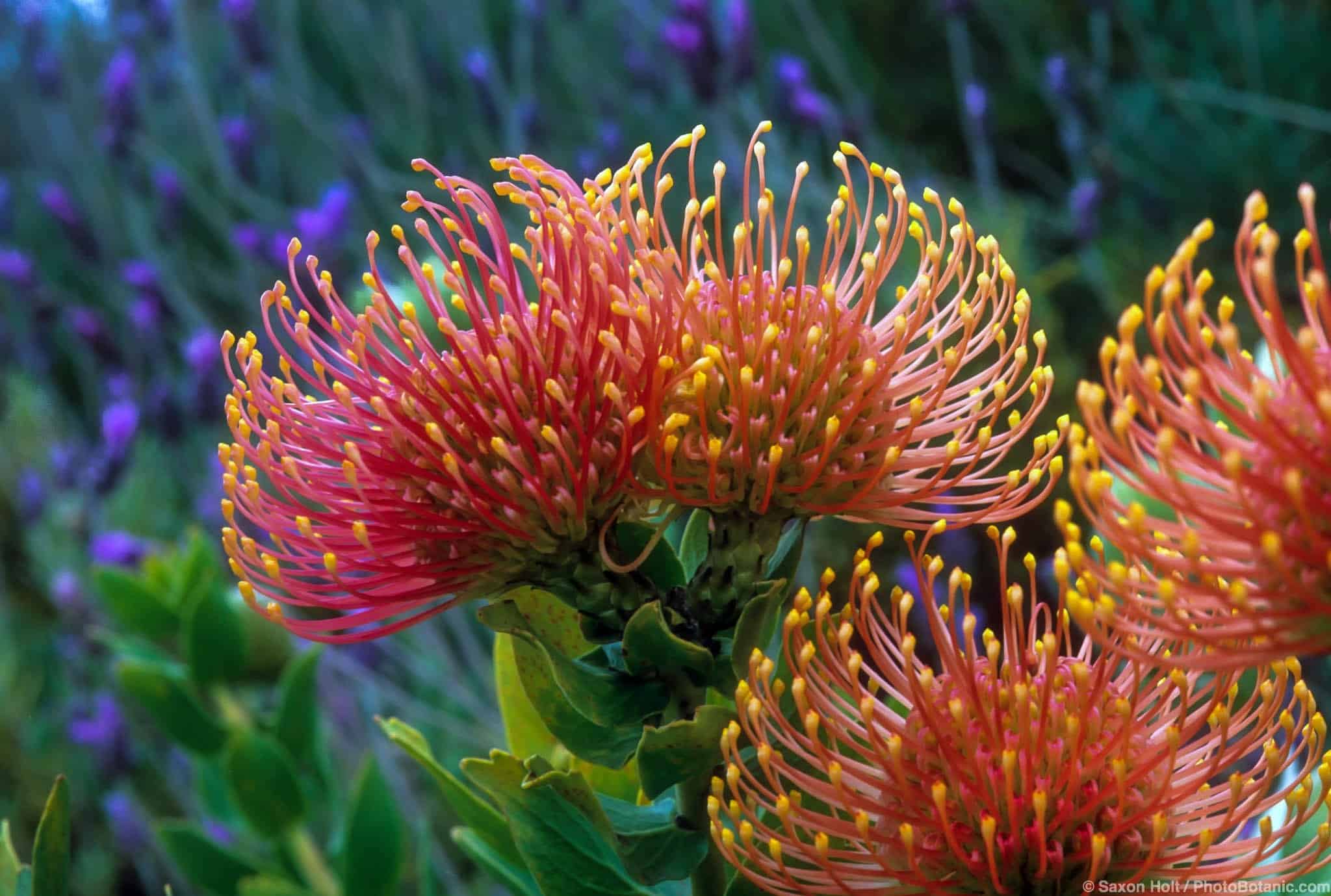
South African shrub, Leucospermum in California garden with blue Echium
It is an exciting time to be a gardener in summer-dry climates. There are so many new plants to be used in untried combinations, so much to learn as we experiment with differing soil structures and temperature ranges, not yet knowing what plants will work with others in the many microclimates of a summer-dry region.
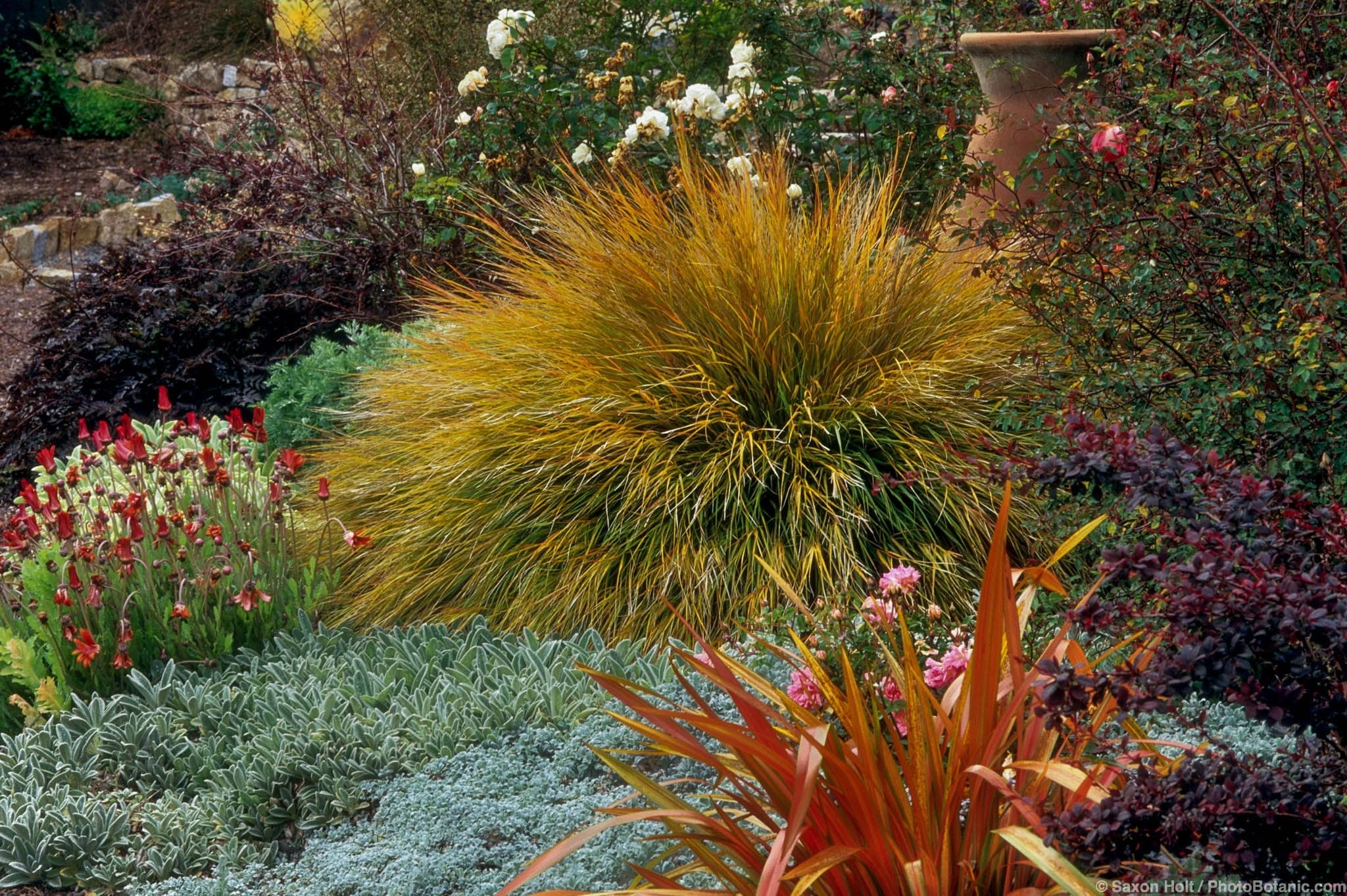
We hope to expand the existing photo database of plants in garden settings on the summer-dry.com site. An ultimate target would be all plants available in the nursery trade in California, which is the goal of California’s WUCOLS Database (Water Use Classification of Landscape Species). We will continue to seek out those adventurous gardeners who are experimenting and reporting with photos.
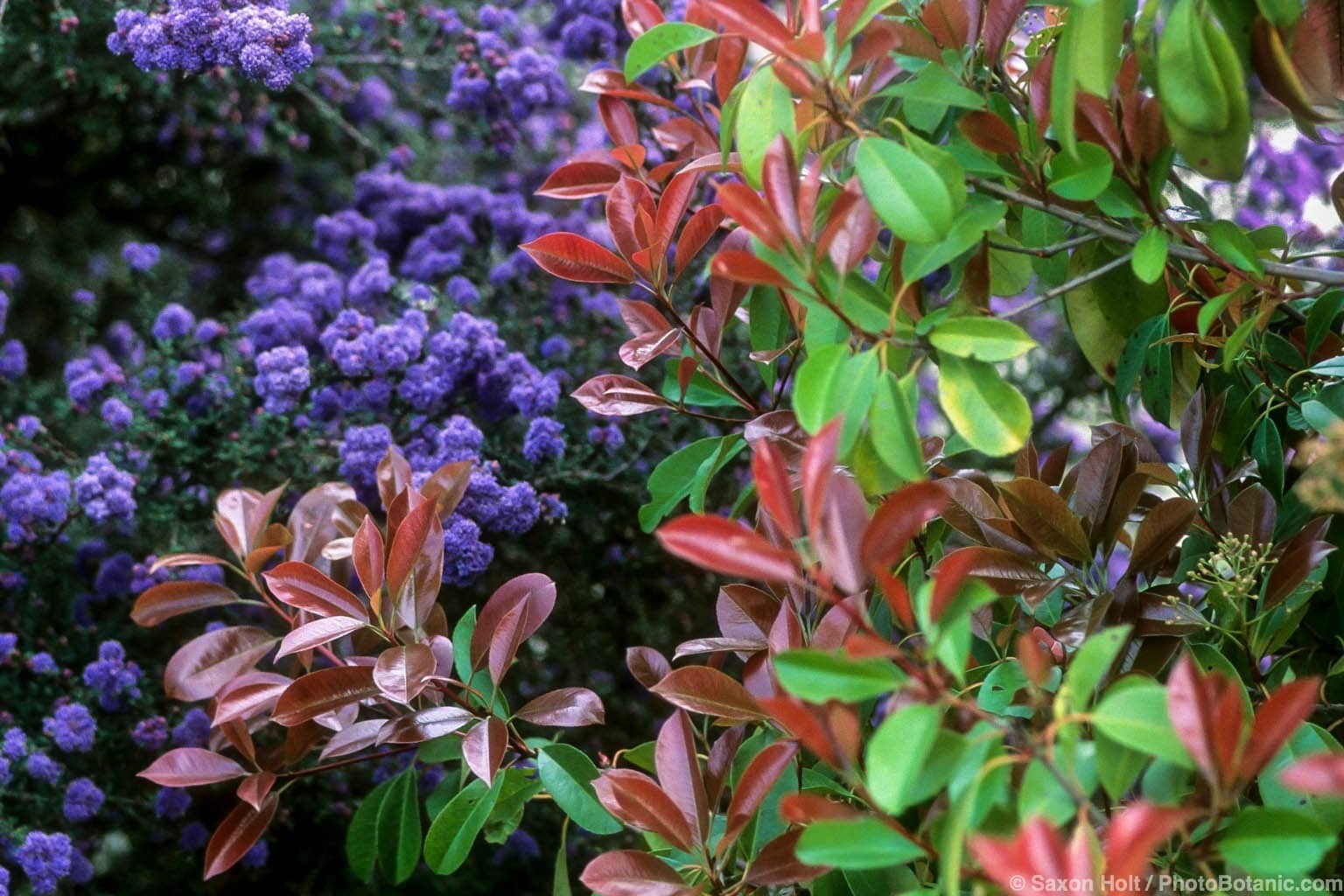
Spring growth of Photinia blends beautifully with flowering Ceanothus
Now let’s hope for some decent rains. A summer-dry climate is supposed to be winter wet. Bring on that winter weather !
Share This!
Related Articles
By: Saxon Holt
By: Nora Harlow
By: Nora Harlow



